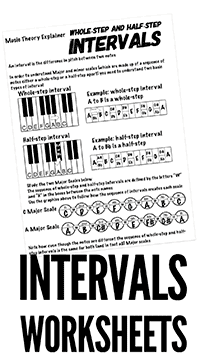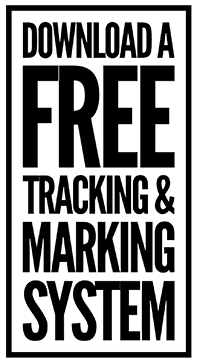Major and Minor PDF Chord Construction Worksheets
When are music students ready to study chord construction?
Chord construction is one of the basics of music theory but it must be undertaken at the right point in a programme of study
What our learners need to know before we present them with material based around chord construction
There are three important elements of music theory that a student needs to understand before they embark upon a study of how chords are formed and constructed

If our students have difficulty understanding chords it is not really because they have dificulty understanding chords It is because they do not understand note naming, whole and half-step intervals and scale construction properly
There is not and can not be any other explanation
It really is as simple as that
Nobody Left Behind!
This is a great point to take stock and to make sure that all of our students routinely score 100% when completing the worksheets on note naming and whole and half step intervals (without access to the "explainers")
By teaching music theory without using any resources that rely on musical notation we are actually ensuring that our students have "nowhere to hide"
"But I don't read music" can no longer be used as an excuse for not engaging with the subject
Ask them.......
Can you count from one to twelve?
Do you know the alphabet from A to G?
Providing they can answer yes to both of these questions you can let them know that the only reason for them not to develop an understanding of music theory is that they can't be bothered
Make sure they have access to a copy of the Note Naming "explainer" document that you can download from the link below and set them the task of completing the worksheets firstly with the explainer document to hand and then without it

When they are secure in their ability to mane any note on a piano keyboard without reference to the "explainer" you should make sure that they have developed the ability to identify the name of notes a distance of a whole and a half-step from any given note
By using the "explainer" document and worksheets that do not rely on notated music your students will feel empowered (and obliged) to engage with the process

The materials on this website provide a "step by step" working method designed to take music students from a place where they have no functional "joined up" knowledge of music theory to a situation where they fully understand scales, chords and harmonic systems.

Above you can see two "explainers" from the download alongside a scales to chords worksheet that you can download as a freebie
"From Scales to Chords"
with Printable PDF Worksheets
Using prior knowledge of note names, intervals and scales to construct and understand chords
If your students need to construct a chord from a standing start then all that is required is that they are able to easily identify the notes of the relevant Major or minor scale. From there they simply define the first (Root), third and fifth notes of the scale to give them the (root, third and fifth) notes contained within the chord.
The material below looks at a lesson using one of our chord worksheets designed to allow our students to better understand the construction of major and minor chords triads and in particular it looks at the problem of "enharmonic thinking" where students will routinely refer to notes by the wrong name (D# rather than Eb?)
Three step process for chord creation and identification
The free worksheet that you can print from this page uses a simple "Three Stage Process" to arrive at a situation where all of the notes of any Major or minor chord are correctly identified

The chord worksheet invites students to firstly identify the notes of a particular chord and then to go on to understand how these notes combine to produce either a Major or a minor triad.
In the example below we can see how it is possible to encourage the student to "work from what is known to what is unknown" (one of the most effective methods of producing a "joined up" knowledge of a theoretical base)
What is "known" is that the root of the triad is definately and unambiguously a note of G and that the fifth of the chord is a D note.
the note which may cause confusion is the third of the chord which a student may think of as either A# or Bb?
The challenge for a teacher is to help the student to a stage where they can determine the correct name for the note. Using the alphabetic sequence (G=1, A=2, B=3, C=4, D=5, etc.)
We can easily identify the notes of G and D as being natural notes (the white notes on a piano keyboard) as they are "unambiguous" in that there is no "either or" choice of note names associated with them.
It can seem like there is no logic to the black notes and that naming them is some sort of optional process.

By counting up the alphabetic sequence (G=1, A=2, B=3, C=4, D=5, etc.) it is possible to help the student to arrive at the correct name for the note.
If G is the first (or root) then the second note (the next note in the alphabetic sequence) must be some kind of A?
If the second note is A then the third note must be some kind of B (in this case Bb)?

Carrying on you could determine that if the third is a B of some description then the fourth must be some kind of C note and so on?
By asking the student to count the half-step (semitones) between the root (G) and the third (Bb) and then to identify the interval created (a minor third) they then have all of the information required to name the chord (G minor)
By using a combination of the musicteachingresources.com worksheets and handouts based around the identification of scales, chords and intervals it is possible to acheive a situation where a student will be able to construct any Major or minor scale and from there to construct or identify any major or minor triad as well as provide information relating to the intervals that make up those chords and scales.
The material can be presented to students as individual sheets during lessons or can be compiled into workbooks for revision or assessment purposes and in addition can be "customised" to take into account the strengths and weaknesses of individual students
This material can even be used to form the basis of music theory power point presentations.
A flexible,simple and effective music theory teaching resource that will last a lifetime for less than the price of a single textbook. No more clumsy (and probably illegal?) photocopying from books required.
These resources are especially designed to make life easier for classroom music theory or instrumental teacher's who need to explain music theory. They have been put together so that an individual music educator might work with all ability levels within a single session as many of the materials are presented using a range of levels of support.
Some of the sheets have blank keyboard diagrams on them and some ask only for the note name (rather than the notation).
In this way it is possible to ensure that a student develops an understanding of music theory using concepts they are already familiar with (the alphabet from A to G and the ability to count from one to twelve) before moving on to develop that understanding to take in written notation etc.
The chord worksheet that you can download below is one of a range of handouts that are designed to encourage students to understand the construction of major and minor triads.
It simply consists of a collection of root position chords with different starting notes to be studied and identified.
The beauty of using this system is that by asking your students to provide the "letter name" of notes before attempting to write the note on a staff of music you will be able to identify examples of "enharmonic thinking" (eg regarding a note of F# as a Gb) and take steps to explain what difference thinking the "right way" makes to developing a useful working knowledge of music theory
In order to give you some idea of the quality and value of our materials to music teachers just download it and use it with our blessing.

Music Theory Learning Pack 8
Triads: 1
Two "explainers" themed around helping students to understand the differences (and similarities) to be found in Major and minor chord types. The explainers show how if you know (or have developed a methodology which will allow you to work out)the notes of any Major or minor scale then you have tools to identify the notes in any Major or minor chord

Music Theory Learning Pack 9
Triads: 2
Two more worksheets and an "explainer" The worksheets invite students to differentiate between Major and minor triads designed to increase a learner's familiarity with the concepts and principles encountered to this point

There Are Another 350 + PDFs In The Download
The Basic Music Theory Course is a very important part of the download but it is only a small part of the story!
There are loads of resources that do use notation as well as a bunch of guitar themed handouts and worksheets
Material covering Blues and Pentatonic scales, 7th chords and inversions We also provide material relating to popular song form
A simple to use"Must have Toolkit" for the modern music educator for less than the price of a single textbook
$18.00
DOWNLOAD 400+ PDF's NOW!
A lifetime of re-usable resources for only $18.00
How to access your simple "one click" download
$18.00
Buy your music teaching resources in complete safety via any major credit card (through paypal) or directly through your paypal account if you have one. If you choose to use a credit card, rest assured that we never see your credit card details as paypal do all of that for us.
When Paypal receive your payment you will be immediately invited to click a
"RETURN TO MERCHANT"button.
You will be taken to a page from where you can download the products that you have paid for NOW!
In the (rare) event that something should go wrong with the order/download process just email me at robh@teachwombat.com
I will check the order and send you the links that will get you to your stuff.Cheers! Rob!
$18.00
musicteachingresources.com is a new sister site of the already well established guitar and bass teacher's resources website teachwombat.com

















